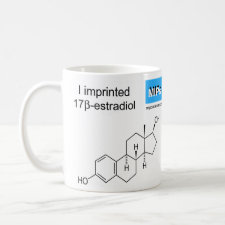
Authors: Zhu QJ, Tang J, Dai J, Gu XH, Chen SW
Article Title: Synthesis and Characterization of Molecularly Imprinted Microspheres as β-estradiol Antibody Binding Mimics.
Publication date: 2006
Journal: Food Science
Volume: 27
Issue: (10)
Page numbers: 45-49.
Alternative URL: http://en.cnki.com.cn/Article_en/CJFDTotal-SPKX200610004.htm
Abstract: The interaction of β-estradiol (β-E) with five monomers was detected using the UV spectrum. Spherical molecularly imprinted polymers (SMIPs) and Spherical non-molecularly imprinted polymers (CPs) of β-E were prepared with novel precipitation polymerization in heating inductive or UV irradiation, and MMA was selected as the functional monomer. For induction heating, a number of factors influencing particle size and uniformity was studied with an orthogonal experiment, and the two polymers morphology were observed by SEM. In addition, HPLC was applied to characterize recognition properties about SMIPs and CPs for β-E and 4-androstene-3,17-dione (And). The research implicated that addition of template β-E was benefit for uniformity of SMIPs of being suitable as a stuffing for immobile phase in HPLC, and the average particle size of β-E-SMIPs was bigger than that of CPs due to the hydrogen bind interaction β-E with MMA. Porogen MeCN and initiator AIBN respectively was the first-line factor of impacting on particle size and uniformity among the porogen, initiator and rotate speed three factors planned. On expressing the recognition effect on SMIPs from MeCN as porogen by HPLC, MeCN was superior to methanol as mobile phase and led to values of capacity factor and imprinted factor improvement. However, with decreasing the rate of β-E vs MMA from 1:4, 1:6 to 1:8 or applying UV irradiation, capacity factor and imprinted factor of SMIPs rose. Thus, recognition properties of SMIPs were able to be improved.
Template and target information: β-estradiol
Author keywords: β-estradiol, Molecularly imprinted polymers, precipitation polymerization, molecular recognition, food safety



Join the Society for Molecular Imprinting

New items RSS feed
Sign-up for e-mail updates:
Choose between receiving an occasional newsletter or more frequent e-mail alerts.
Click here to go to the sign-up page.
Is your name elemental or peptidic? Enter your name and find out by clicking either of the buttons below!
Other products you may like:
 MIPdatabase
MIPdatabase









